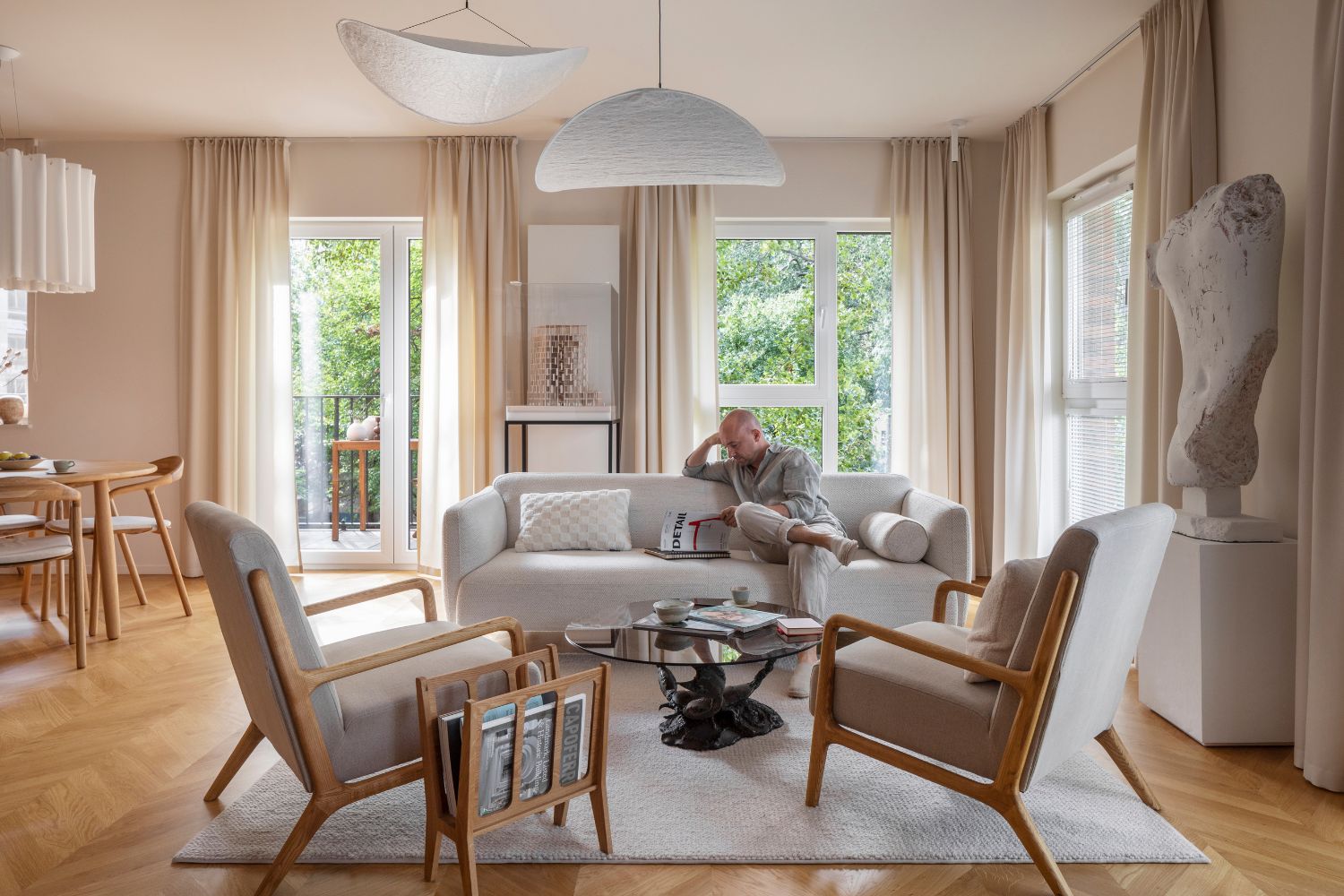- Home
- Articles
- Architectural Portfolio
- Architectral Presentation
- Inspirational Stories
- Architecture News
- Visualization
- BIM Industry
- Facade Design
- Parametric Design
- Career
- Landscape Architecture
- Construction
- Artificial Intelligence
- Sketching
- Design Softwares
- Diagrams
- Writing
- Architectural Tips
- Sustainability
- Courses
- Concept
- Technology
- History & Heritage
- Future of Architecture
- Guides & How-To
- Art & Culture
- Projects
- Interior Design
- Competitions
- Jobs
- Store
- Tools
- More
- Home
- Articles
- Architectural Portfolio
- Architectral Presentation
- Inspirational Stories
- Architecture News
- Visualization
- BIM Industry
- Facade Design
- Parametric Design
- Career
- Landscape Architecture
- Construction
- Artificial Intelligence
- Sketching
- Design Softwares
- Diagrams
- Writing
- Architectural Tips
- Sustainability
- Courses
- Concept
- Technology
- History & Heritage
- Future of Architecture
- Guides & How-To
- Art & Culture
- Projects
- Interior Design
- Competitions
- Jobs
- Store
- Tools
- More
How to Blend Aesthetics with Practicality in Home Design for a Stylish and Functional Space
Discover the perfect fusion of beauty and functionality in home design with this insightful article. Explore versatile furniture options, smart storage solutions, and minimalist approaches that enhance your living space's aesthetics and practicality. Learn how to incorporate color, texture, and lighting for a harmonious home that reflects your personal style while ensuring comfort and efficiency.

In the quest for a perfect home, we’re often torn between beauty and functionality. It’s a common misconception that we must choose one over the other. However, blending aesthetics with practicality in home design is not only possible but also incredibly rewarding. By embracing this harmonious balance, we create spaces that are both visually stunning and effortlessly livable.
When we design our homes, we aim to reflect our personalities while ensuring comfort and usability. It’s about making thoughtful choices that enhance both form and function. From selecting versatile furniture to integrating smart storage solutions, every decision contributes to a cohesive environment where style meets substance.
Let’s explore how we can achieve this balance, transforming our living spaces into havens that delight the senses and simplify our daily routines. With the right approach, we can design homes that are as practical as they are beautiful, perfectly tailored to our needs and tastes.

Table of Contents
ToggleUnderstanding the Balance Between Aesthetics and Practicality
Creating a home where aesthetics and practicality coexist requires intentional planning. Striking the right balance involves recognizing that both elements contribute equally to a living space’s value. We consider aesthetic appeal important; however, functionality ensures daily comfort and convenience.
Aesthetic factors, when harnessed effectively, reflect personal style. By choosing color palettes that evoke desired emotions and using textures that enhance visual interest, we ensure the space resonates personally. Yet, focusing solely on beauty without considering practical needs may lead to dissatisfaction.
Practicality encompasses the efficiency and usability of spaces. We analyze our routines to design environments that accommodate them. For instance, in a kitchen, accessibility to frequently used items enhances functionality. Including built-in storage options in living areas can keep clutter at bay while maintaining a clean aesthetic.
Material choices impact both aesthetics and practicality. Durable materials like hardwood or stone add elegance and withstand wear. We recommend selecting items that balance style with longevity.
By intertwining both aspects, we create homes that cater to visual preferences without compromising on living efficiency. This approach helps transform spaces into domains of beauty and functionality.
Key Principles of Practical Aesthetic Design
Blending aesthetics with practicality requires a thoughtful approach to design. We focus on ensuring spaces are both beautiful and usable.
Functionality Meets Beauty
Incorporating functionality into design enhances both form and purpose. We select furniture that offers multiple functions, like a sofa bed in a guest room or a coffee table with storage. This choice not only saves space but also adds visual interest. Spaces should facilitate easy movement and accessibility, like ensuring kitchen layouts support efficient workflows. Our material choices consider durability and elegance to create harmonious environments that last.
Simplicity and Clarity
Simplified designs enhance space clarity and flow. We embrace minimalism by using clean lines and avoiding clutter, resulting in a serene atmosphere. A neutral color palette, for instance, offers a backdrop for vibrant accents, achieving a balanced aesthetic. Thoughtful organization of items, such as using uniform storage solutions, ensures everything has a designated spot, preventing visual chaos. Prioritizing simplicity encourages a focus on essential elements, making spaces both attractive and functional.

Choosing the Right Materials
Incorporating the right materials in home design elevates both aesthetics and functionality. Material choices impact longevity and visual appeal, making them fundamental to practical yet beautiful spaces.
Durable and Attractive Options
Selecting durable materials is pivotal for maintaining a pristine look over time. For flooring, hardwood and porcelain tiles offer long-lasting appeal and resistance to wear. Countertops made from quartz and granite combine durability with elegant finishes suitable for kitchens and bathrooms. In furniture, microfiber and leather are resilient and enhance room decor. We ensure our selections withstand everyday use while enhancing our style.
Eco-Friendly Choices
Sustainable materials blend ecological responsibility with innovative design. Bamboo and reclaimed wood bring natural beauty and durability to flooring and furniture. Low-VOC paints reduce environmental impact while providing vibrant color options. We explore options like recycled glass and concrete for countertops, which offer striking designs and support sustainability. Prioritizing eco-friendly choices aligns with our values and aesthetic goals.
Incorporating Color and Texture
Balancing color and texture effectively enhances both the aesthetic appeal and practicality of our living spaces. Thoughtful integration of these elements transforms a simple room into a vibrant and functional environment.
Harmonizing Color Palettes
Selecting complementary colors sets the tone for any space. Our approach involves choosing a base of neutral tones complemented by vibrant accents. For example, a soft gray backdrop enriched with teal or coral highlights creates a lively yet calming atmosphere. A consistent color theme throughout the home creates a sense of flow, unifying different spaces harmoniously. This strategy ensures cohesiveness and offers versatility, allowing for seasonal changes or personal touches without major overhauls.
Using Textures for Depth and Interest
Textures add dimension, making spaces feel rich and inviting. We incorporate various materials like wool throws, velvet cushions, and wooden furniture to achieve a tactile and visual balance. For instance, pairing a sleek leather sofa with a woven rug and metal accents brings a blend of warm and cool elements, enhancing sensory interest. Diverse textures maintain visual engagement without overwhelming the decor, ensuring both aesthetic charm and practicality in everyday use.

Maximizing Space Efficiency
Space efficiency in home design involves using every area effectively while retaining aesthetics. Multi-functional furniture is key. Sofa beds and foldable dining tables offer dual-use options that save space without sacrificing style. Vertical storage maximizes wall space and declutters. Shelving units and hanging organizers utilize vertical areas, freeing floor space and enhancing room flow.
Integrating built-in storage solutions helps keep essentials hidden yet accessible. For instance, benches with hidden compartments or under-bed storage trays offer practical solutions for tight spaces. Minimalism also contributes to space efficiency. A minimalist approach reduces unnecessary items, focusing only on vital elements that blend beauty and practicality.
Open layouts encourage a seamless transition between areas, making small spaces feel larger. They’re ideal for blending kitchen, dining, and living areas into a cohesive unit. Proper lighting plays a crucial role as well. Natural light exposure and strategically placed lamps can make rooms appear more spacious and welcoming.
Using mirrors amplifies space perception. Mirrors reflect light and give the illusion of a larger, brighter space. Wallpaper or paint with horizontal or vertical stripes can elongate a room visually, enhancing aesthetic appeal while improving space perception. Through thoughtful planning and design choices, we can achieve a perfect balance between functionality and beauty in any home space.
Lighting as a Design Element
Lighting plays a crucial role in shaping both the functionality and mood of a living space. Strategic lighting choices can enhance aesthetics while fulfilling practical needs. By using different lighting types, we can influence how a room is perceived and highlight specific features.
Layered Lighting
Using a combination of ambient, task, and accent lighting creates a versatile environment. Ambient lighting provides overall illumination for safe movement through spaces. Task lighting focuses on workspaces, such as under-cabinet lights in kitchens or desk lamps in offices, ensuring sufficient illumination for detailed activities. Accent lighting adds depth by highlighting architectural features or artwork.
Fixtures and Bulbs
Selecting the right fixtures and bulbs enhances a room’s aesthetic appeal. For instance, pendant lights can serve as eye-catching focal points in dining areas, while recessed lights offer understated elegance. The bulb choice impacts ambiance; soft, warm bulbs create cozy settings, whereas bright, white bulbs foster a lively, alert environment.
Smart Lighting
Integrating smart lighting systems improves usability and efficiency. Automatic dimmers, remote control options, and programmable lighting schedules allow us to adapt lighting according to mood or time of day effortlessly. This tech-savvy approach not only boosts convenience but also contributes to energy savings.
Lighting, when used thoughtfully, enriches overall design connecting beauty with functionality.

Conclusion
Blending aesthetics with practicality in home design crafts spaces that are both beautiful and efficient. It’s essential to balance personal style with functionality to create harmonious living environments. By incorporating versatile furniture and clever storage solutions, we achieve spaces that reflect individual tastes while offering usability.
Intentional planning remains key. Integrating color and texture enriches our spaces, enhancing both visual appeal and practicality. A base of neutral tones paired with vibrant accents creates a cohesive atmosphere. Furthermore, mixing diverse materials introduces depth and sensory engagement, enriching the overall design.
Maximizing space efficiency benefits from using multi-functional furniture and vertical storage methods. Our focus should be on essential elements to maintain both beauty and functionality, employing minimalist approaches where appropriate. Proper lighting plays a significant role, shaping the ambiance and highlighting design features while supporting daily activities. Layered lighting solutions enhance the versatility and mood of our spaces.
Ultimately, successful home design involves carefully balancing these components. Practical aesthetics create environments that delight and serve our needs, transforming homes into functional havens that reflect both style and efficiency.
- aesthetic home decor
- aesthetic living room
- aesthetic living space
- aesthetic room design
- chic home design ideas
- contemporary home design
- cozy aesthetic homes
- creative home layouts
- customizable home design
- elegant home interiors
- functional home decor
- functional interior design
- home design aesthetics
- home organization solutions
- interior design for small spaces
- minimalist home aesthetics
- modern home aesthetics
- multi-functional home furniture
- practical decor ideas
- practical home design
- practical interior solutions
- space-saving home ideas
- stylish functional space
- stylish home solutions
Submit your architectural projects
Follow these steps for submission your project. Submission FormLatest Posts
Modern American Homes: Interior Design Trends to Watch in 2026
Interior design in the United States is evolving toward warmer, more adaptable,...
BXB Studio’s Hybrid Interior: Redefining the Modern Architectural Workplace
The Warsaw headquarters of BXB Studio was established in a modest 70...
5 Must-Know Interior Design Trends in American Homes
From warm minimalism to bold oversized artwork, these five interior design trends...
How Open Kitchens Create a Sense of Space Indoors (Without Sacrificing Function)
Open kitchens: see how sightlines, lighting, and smart layouts make rooms feel...












Leave a comment